Connectivity and Data Acquisition
This section covers modules, functions, and features related to device connectivity and management, as well as data acquisition.
There are two principal ways to make an existing or new device work with Iotellect:
One method entails using a device driver to convert device protocol to unified model format from inside a cloud or edge Iotellect server. Driver usage assumes that communications between the device and server use the device's native protocol. The driver allows the Iotellect Server to correctly parse and 'understand' the data from this specific device, and thus make it accessible via the various Iotellect Server facilities (events, reports, models, etc.). This driver is either a standard or a custom Java / Low-code software component running on the server side.
The second way is using an agent that performs the conversion of device data to the format of the unified model inside a device and/or field gateway to which the device is connected. Once an agent is used, communications between the agent and Iotellect server are performed via an IP network using Iotellect protocol. An Agent is a software library inherited into the gateway's/device's firmware or a small separate application running on a communication module embedded into a device. This hardware/software combination acts as a mediator between a hardware device's "main" firmware and Iotellect Server.
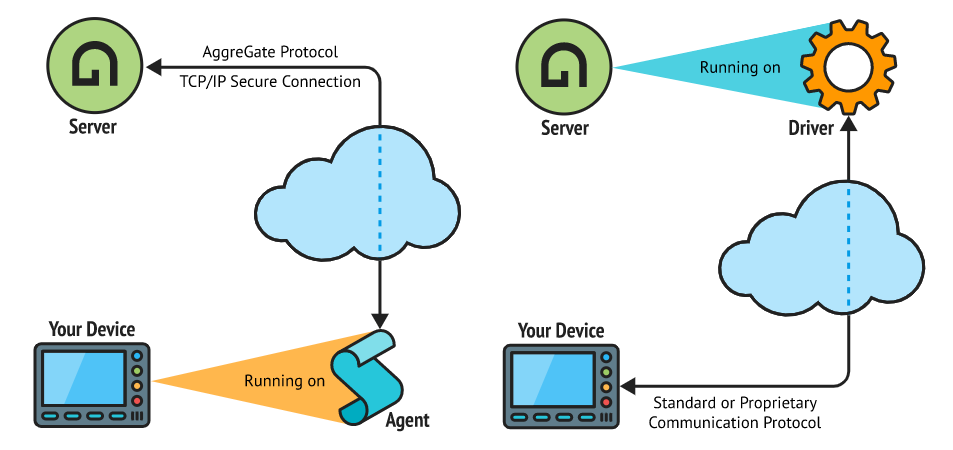
Connection of a Device Using Device Driver
This section describes scenarios for connecting devices via device drivers.
(1) Connecting a Device Using Standard Protocol
If your device supports one of the standard communication protocols (e.g. SNMP), it may be directly connected to Iotellect using a bundled device driver. No software or hardware protocol conversion is required in this case. Just set up all necessary physical connections and your device is ready to communicate with Iotellect Server.

(2) Developing a Custom Device Driver
You could also tackle the problem from a strictly software angle. A driver is a software component allowing Iotellect to "understand" the protocol for an existing device.
In most cases, Flexible Device Driver helps to enable device communications and protocol parsing in low code (non-programmatic) mode.
For very complicated device protocols, use Driver Development Kit to code a driver in Java.

Connection of a Device via an Agent
This section covers scenarios of agent usage.
(1) Designing a New Device Using Agent Software Library
This scenario assumes that some implementation of the Agent software library is embedded into your device's internal software/firmware. This library will handle the conversion of data to Iotellect protocol, as well as Iotellect Server communications and data transfer. There are versions of the Agent software library available in Java, .NET, C++, and many other programming languages.
Also, Iotellect's communication protocol is open and well-documented. For some large-volume applications, it may sometimes be economical to write a complete implementation of this protocol for the microcontroller you are already using. The microcontroller would then connect to Iotellect just like a device running a standard Agent library does. From the system's point of view, there would be no difference, and the device would work smoothly as a part of the system.
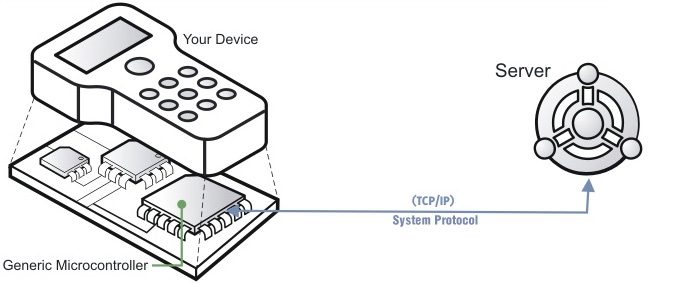
(2) Connecting an Existing Device with Iotellect Agent
Using this method, you embed a Iotellect module, such as the EM1000, into your device. This module runs a BASIC version of the Agent library. You modify the source for the Agent application so that it interfaces with your device ("understands" its communication protocol). It is then used as a transparent interface between Iotellect and your device, allowing you to access all device settings, data, and events from within Iotellect.
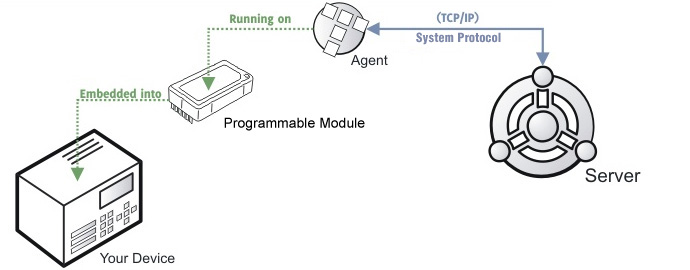
Note that if for some reason you are unable to embed a device into your existing circuit, you can always use an external BASIC-Programmable Controller (such as the DS1202, the stand-alone version of the EM1202) running the Agent application.
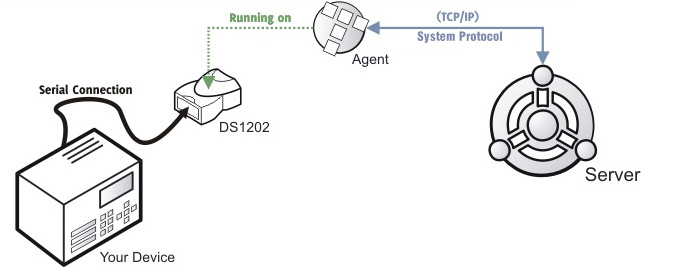
(3) Designing a New Device Based on Programmable Module
Iotellect module, such as the EM1000, is powerful enough to serve as the central processor for your application. You can connect it directly to the various sensors and circuits of your device, and use it as the main CPU, locally controlling your device's operation. In effect, you will be taking the Agent application and greatly expanding and customizing it. You would be saving the cost of a CPU for your device, and still, be able to connect to Iotellect and enjoy all of its benefits.
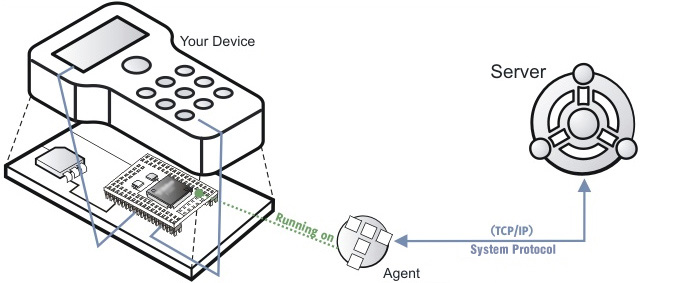
Was this page helpful?